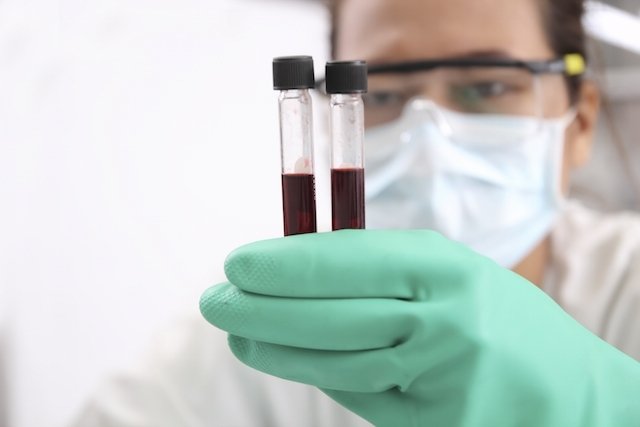Arterial blood gas analysis is a blood test that evaluates blood pH, bicarbonate concentration, partial pressure of CO2 and other blood parameters.
This exam is normally carried out on people hospitalized in Intensive Care Units (ICU) and its main objective is to check whether gas exchange is occurring correctly.
Furthermore, it is an exam that can be requested during hospitalization to help diagnose respiratory, kidney diseases or serious infections, in addition to checking whether the treatment is effective. Thus, it can be used as one of the criteria that can influence patient discharge.

What is it for
Arterial blood gas analysis is requested by the doctor to:
- Check lung functionespecially in asthma or bronchitis attacks and in case of respiratory failure – Find out what the symptoms are and how respiratory failure is treated;
- Help assess blood pH and aciditywhich is useful to help diagnose kidney failure and cystic fibrosis, for example;
- Evaluate the functioning of metabolismwhich is important in identifying heart disease, stroke or type II diabetes, for example;
- Lung function after surgical procedure or transplant.
In addition, blood gas analysis is also requested in case of drug overdose. This exam is not common, it is not carried out in clinics or during routine consultations, and is only requested by the doctor in more serious cases.
How the exam is carried out
Arterial blood gas analysis is performed by collecting a blood sample from the artery in the arm or leg. This type of collection is quite painful, as it is a more invasive collection. The collected blood is taken to the laboratory so that biochemical tests can be carried out to check blood pH, bicarbonate concentration and partial pressure of CO2.
Arterial blood gas analysis should not be performed in case of peripheral arterial disease, as there may be difficulties in removing blood, clotting problems or if the person is using anticoagulants. In these cases, the doctor may order other tests to identify the diseases that are causing respiratory changes.
Reference values
The normal values for the arterial blood gas test are:
- pH: 7.35 – 7.45
- pO2 (partial pressure of oxygen): 80 – 100 mmHg
- Bicarbonate (HCO3): 22 – 26 mEq/L
- PCO2 (partial pressure of carbon dioxide): 35 – 45 mmHg
The arterial blood gas analysis indicates how the lung is functioning, that is, whether gas exchange is being carried out correctly, thus indicating the person’s condition, which may be respiratory or metabolic acidosis or alkalosis. Understand what metabolic and respiratory acidosis, metabolic alkalosis and respiratory alkalosis mean.
How to understand the exam results
The following table indicates some examples of altered arterial blood gas values:
This exam is not enough to make a diagnosis, it only suggests respiratory, kidney or metabolic disorders, and other complementary tests are normally requested by the doctor, such as X-ray, tomography, other blood tests and urine tests so that the diagnosis can be made and Treatment can be started according to the cause of the change in blood gas analysis.
Difference between arterial and venous blood gas analysis
Arterial blood gas analysis determines the exact values of the amount of oxygen and whether the kidneys and lungs are functioning correctly, which helps in the diagnosis of lung and kidney diseases and infections.
Venous blood gas analysis, on the other hand, is performed as a second option when collection from the artery is not possible, with collection from the vein, and its main objective is to help diagnose peripheral arterial diseases or blood clotting problems.

Sign up for our newsletter and stay up to date with exclusive news
that can transform your routine!
Warning: Undefined array key "title" in /home/storelat/public_html/wp-content/plugins/link-whisper-premium/templates/frontend/related-posts.php on line 12
Warning: Undefined array key "title_tag" in /home/storelat/public_html/wp-content/plugins/link-whisper-premium/templates/frontend/related-posts.php on line 13



